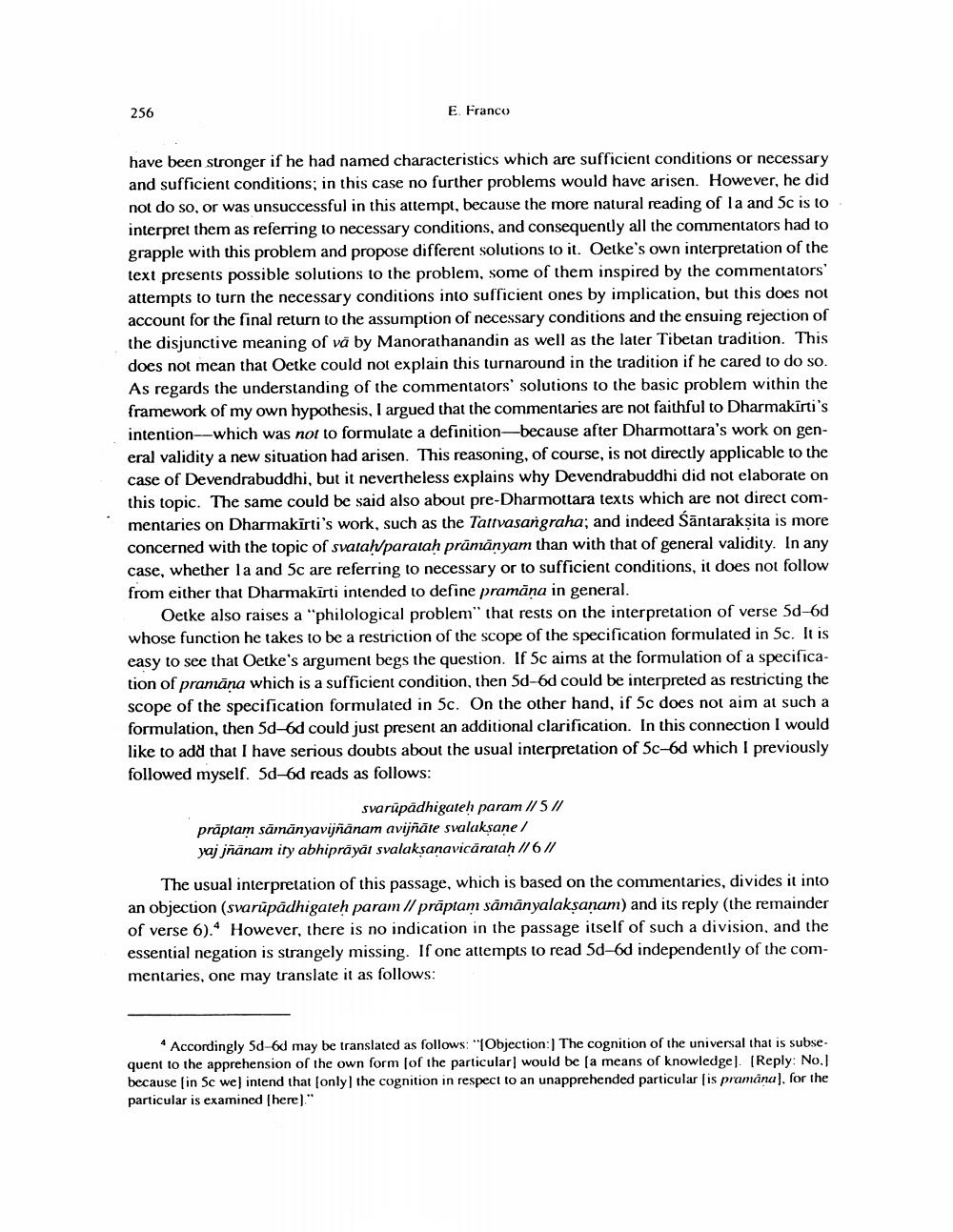Book Title: Response To Claus Obteks Paper Author(s): Eli Franco Publisher: Eli Franco View full book textPage 4
________________ 256 E. Franco have been stronger if he had named characteristics which are sufficient conditions or necessary and sufficient conditions; in this case no further problems would have arisen. However, he did not do so, or was unsuccessful in this attempt, because the more natural reading of la and 5c is to interpret them as referring to necessary conditions, and consequently all the commentators had to grapple with this problem and propose different solutions to it. Oetke's own interpretation of the text presents possible solutions to the problem, some of them inspired by the commentators' attempts to turn the necessary conditions into sufficient ones by implication, but this does not account for the final return to the assumption of necessary conditions and the ensuing rejection of the disjunctive meaning of va by Manorathanandin as well as the later Tibetan tradition. This does not mean that Oetke could not explain this turnaround in the tradition if he cared to do so. As regards the understanding of the commentators' solutions to the basic problem within the framework of my own hypothesis, I argued that the commentaries are not faithful to Dharmakirti's intention--which was not to formulate a definition-because after Dharmottara's work on general validity a new situation had arisen. This reasoning, of course, is not directly applicable to the case of Devendrabuddhi, but it nevertheless explains why Devendrabuddhi did not elaborate on this topic. The same could be said also about pre-Dharmottara texts which are not direct commentaries on Dharmakirti's work, such as the Tattvasangraha; and indeed Santarakṣita is more concerned with the topic of svatah/parataḥ pramanyam than with that of general validity. In any case, whether la and 5c are referring to necessary or to sufficient conditions, it does not follow from either that Dharmakirti intended to define pramāna in general. Oetke also raises a "philological problem" that rests on the interpretation of verse 5d-6d whose function he takes to be a restriction of the scope of the specification formulated in 5c. It is easy to see that Oetke's argument begs the question. If 5c aims at the formulation of a specification of pramāna which is a sufficient condition, then 5d-6d could be interpreted as restricting the scope of the specification formulated in 5c. On the other hand, if 5c does not aim at such a formulation, then 5d-6d could just present an additional clarification. In this connection I would like to add that I have serious doubts about the usual interpretation of 5c-6d which I previously followed myself. 5d-6d reads as follows: svarupädhigateḥ param //5// prāptam sāmānyavijñānam avijñāte svalakṣane/ yaj jñānam ity abhiprayat svalakṣaṇavicärataḥ //6// The usual interpretation of this passage, which is based on the commentaries, divides it into an objection (svarūpādhigateḥ param // prāptam sāmānyalakṣaṇam) and its reply (the remainder of verse 6). However, there is no indication in the passage itself of such a division, and the essential negation is strangely missing. If one attempts to read 5d-6d independently of the commentaries, one may translate it as follows: Accordingly 5d-6d may be translated as follows: "[Objection:] The cognition of the universal that is subsequent to the apprehension of the own form [of the particular] would be [a means of knowledge]. [Reply: No.] because [in Sc we] intend that [only] the cognition in respect to an unapprehended particular [is pramana], for the particular is examined [here]."Page Navigation
1 2 3 4 5 6 7
